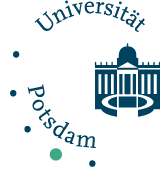Structure and Organisation of Government (SOG)
Prof. Dr. Werner Jann funded by the DFG ('Open Research Area plus (ORA plus) for the Social Sciences') - Duration 2014-2016
Why are some administrative organizations successfully created, frequently reorganized, merged, or terminated, whereas others are seemingly 'immortal' and become more powerful than the elected politicians that created and control them? This question has become pertinent, especially in the past three decades, within European parliamentary democracies. By the end of the 1970s, when the golden era of welfare state expansion and state growth came to an end, a new generation of political leaders such as President Ronald Reagan of the United States and Prime Minister Margaret Thatcher of the United Kingdom initiated a series of administrative reform trajectories – privatization, deregulation, agencification, liberalization, decentralization, and New Public Management – with the aim to fundamentally alter the scope and scale of government and sparked off several reform trajectories across the developed and developing economies. This project develops and applies a novel framework that will systematically map and explain organizational changes within central government cross-nationally in four European parliamentary democracies, France, Germany, the Netherlands and the United Kingdom, over the last three decades. The project builds upon the most influential theory of the structure and organization of governments, the 'theory of the politics of structural choice'. It develops a comparative quantitative dataset of organizational changes within the central governments of these four countries for the period 1980 and 2010. It also examines changes in the structure and organization of government across four selected policy areas in these countries.
